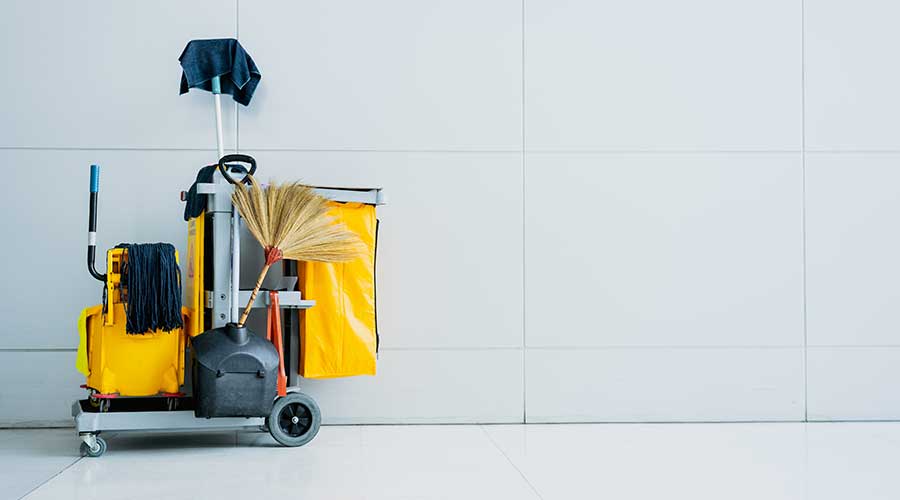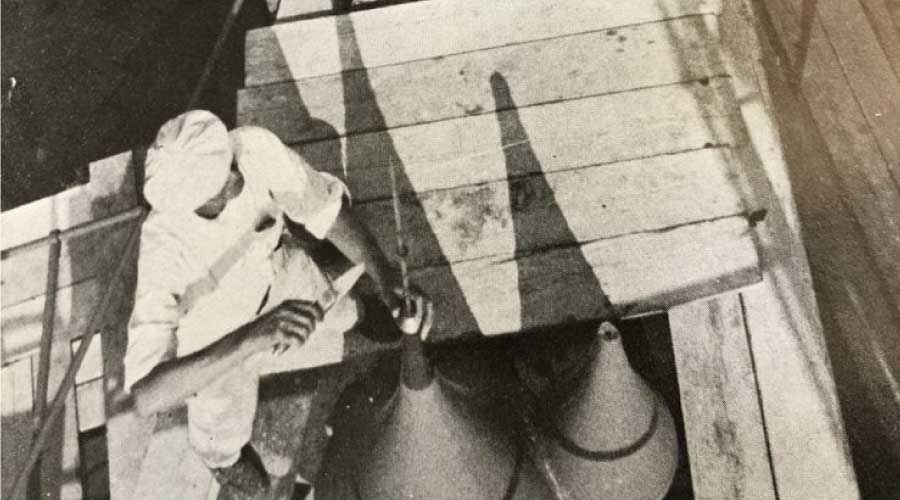Painting Projects That Perform
Before the first drop of paint goes on, managers and paint crews must address several basic yet essential issues
Painting projects can be among the most time-consuming tasks to plan and execute properly, and they are among the most visible or all maintenance work. Successful projects can both protect facilities and enhance their appearance, but success starts with several important decisions facing managers and paint crews.
Before the Paint Goes On
Before the project starts, workers need to take several important steps. Preparing for a painting project might be more complex than preparing for any other type of maintenance work. Workers must: select the paint; thin it to the proper viscosity; match colors; decide on a brush, spray or roller application; gather rags, tarpaulins, masking tape, and sanding and scraping tools; collect equipment that includes ladders, scaffolding and safety belts; and transport all of this material to the job site.
Once on site, the most important phase of the project can begin — surface preparation. This step provides the best foundation for a high-quality, long-lasting paint job. Since it affects both appearance and surface durability, pretreatment must be thorough enough to provide good conditions for paint application.
All paint adheres best to a clean, dry surface that is free of loose surface material and old paint. On wood surfaces, the best way to obtain these conditions is to sand the surface — if it has a high-gloss finish — and wipe it down with a cloth that is damp with turpentine or paint thinner. Paint will stick better to a surface that is slightly rough than it will to a smooth, shiny surface.
The final important step is wiping the surface with a clean, solvent-dampened rag. This step removes loose dust, dirt and chalky substances left on the surface when old paint oxidizes. If workers notice any dampness in the wood, they must let it dry before painting. Paints and primers will not adhere to very long to a surface that is damp.
In such cases, they will need to check to see from where the water is coming. If it is coming from inside of the wood, moisture is getting behind it and seeping through. They must stop the moisture at the source, or they will be repainting the same surface every year, and the wood surely will rot from the continued dampness.
If the wood already is rotting, the best solution is to replace it and seal it off from further water intrusion.
Metal surface preparation requires the same precautions as wood where dampness is concerned. Heavy or widespread rusting of carbon steel indicates the area might be too damp to retain a paint finish.
The first step to remedy this problem is to find the source of the water and seal it off from the inside of the metal surface. Water or water vapor that contacts the painted surface after painting can be controlled. When the surface dries out, workers can sand it. If it is too rough for sanding, use a chipping hammer and wire brush to remove all loose scale and rust.
Then wipe the surface with a rag dampened with solvent or paint thinner to get rid of the fine layer of remaining dust. Now painters have a tight, dry surface that provides a good base for the paint finish.
Matching Paints and Needs
Planning a paint job starts with the realization that the cost of the job is 15-20 percent material and 80-85 percent labor. By using good-quality materials, managers can reduce the frequency of repainting and lower the overall cost of maintenance.
Paints generally contain 15-45 percent pigment and 55-85 percent vehicle. High-pigment paints cover better, last longer, and tend to be the most expensive. The most frequently used paints are vinyl latex, acrylics, alkyds, lacquers, varnishes, epoxy polyurethane and silicone. Understanding their characteristics can help managers specify the most appropriate paint for the project.
Vinyl latex is a combination of ethylene derivatives and a rubber or plastic globule emulsion in water. Flat finishes are most often used on walls and ceilings in lobbies, offices, classrooms and storage areas. Satin and semigloss finishes are used more often in kitchens, cafeterias, locker rooms and restrooms.
Acrylic resins are thermoplastic or thermosetting polymers or copolymers of acrylic acid, methacrylic acid, esters of these acids, or acrylonitrile. They produce a plastic protective coating with high impact and corrosion resistance.
Alkyd resins are used on surfaces with moderate to severe exposure to chemical fumes, corrosion, moisture, and in areas requiring high flexibility, abrasion resistance, and gloss retention.
Clear lacquers and varnishes are made from amber and rosin. They give surfaces a hard, protective coating over bare wood, stain, or shellac sealers for a natural wood-grain appearance.
Epoxy, a thermosetting resin, and polyurethane, made from esters of certain acids, provide high impact and abrasion resistance for floors, railings, and work surfaces. They are highly stable and resistant to chemicals. Polyurethane produces a high, long-lasting gloss finish.
Silicone coatings, which are semi-organic polymers containing silicone oxide, are used for high termal and chemical stability and are water-repellant.
Finishing Touches
Once the paint decision is made, managers and work crews still face additional choices before the project can begin:
• Primers. The right primer assures a good bond between the substrate and the finish coat. Workers should use wood primers for wood, steel primers for steel, and zinc chromate primers for galvanized metal piping and ducts.
• Water or oil? Water-based paints are non-continuous emulsions or dispersions. Oil-based paints are true solutions. Where the continuity of the surface is important, such as on water treatment or chlorinating equipment or where severe moisture and fumes are present, oil-based enamel paint is best. Where moderate, dry conditions are present, water-based paints are advantageous because they are easier to handle, mix, clean up after the job is finished. Water-based paints now are commonly formulated for exterior use and product high-quality finishes.
• Colors. White, light green and titanium dioxide pigments give high brightness to a finish. Some resins contain photosensitive chemicals and yellow with age. To prevent this from happening, workers should use pigments that shade the resins or use coatings that contain silicones, acrylics or certain polyurethanes.
Related Topics:











